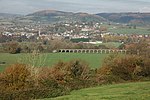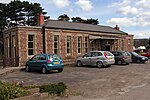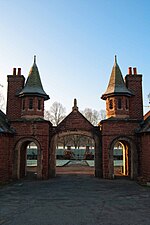Monnow Valley Walk
Geography of MonmouthshireGwent geography stubsLong-distance footpaths in WalesRecreational walks in WalesUse British English from January 2018

Monnow Valley Walk is a 40 miles (64 km) long-distance footpath in north-east Monmouthshire, South Wales, with short sections in Herefordshire, England and Powys. It links Monmouth and Hay-on-Wye, following the River Monnow and the foot of the Black Mountains. The trail is linear running through the valley of the River Monnow, from Monmouth, near its confluence with the River Wye, to the headwaters below Hay Bluff. At this point, the walk links up with the Offa's Dyke Path National Trail, sharing the same route to the finishing points at Hay-on-Wye.Notable settlements on route include Monmouth, Skenfrith, Grosmont, Clodock and Hay-on-Wye.
Excerpt from the Wikipedia article Monnow Valley Walk (License: CC BY-SA 3.0, Authors, Images).Monnow Valley Walk
The Old Road,
Geographical coordinates (GPS) Address Nearby Places Show on map
Geographical coordinates (GPS)
| Latitude | Longitude |
|---|---|
| N 51.8063 ° | E -2.7103 ° |
Address
Monmouth School Sports Ground
The Old Road
NP25 3LS , Wyesham
Wales, United Kingdom
Open on Google Maps









